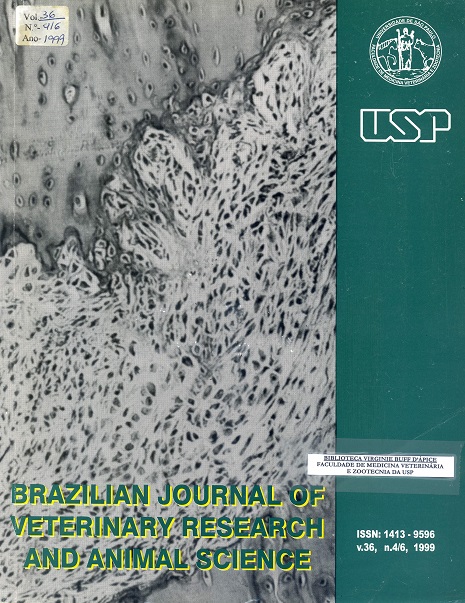The study of the portal hepatic system in the domestic duck (Cairina moshata)
DOI:
https://doi.org/10.1590/S1413-95961999000400001Keywords:
Portal vein, Circulatory system, Birds, DucksAbstract
In this research a study on the course of the portal hepatic system in 30 adult domestic ducks, male and female was performed. The portal venous system consists of two portal hepatic veins: right and left. The left portal hepatic vein is formed by left gastric veins (in a number varying from 1 to 2), veins from the ventral margin of the gizzard, piloric vein and caudal proventricular vein. The right portal hepatic vein is formed by the caudal mesenteric vein, cranial mesenteric vein, proventricular-spleenic vein and gastro-pancreatic-duodenal vein. The mesenteric caudal vein takes in tributaries from the mesorectum, cloaca and ileo-cecum-colic junction. The cranial mesenteric vein takes in jejunal tributaries (in number varying from 12 to 21) and forms anastomosys with the caudal mesenteric vein, which results in the common mesenteric vein. The pancreatic-duodenal vein receives two right gastric veins, this way forming the gastro-pancreatic-duodenal vein. The proventricular-spleenic vein is formed by the dorsal and right proventricular vein and by the spleenic veins.Downloads
Download data is not yet available.
Downloads
Published
1999-01-01
Issue
Section
BASIC SCIENCES
License
The journal content is authorized under the Creative Commons BY-NC-SA license (summary of the license: https://
How to Cite
1.
Pinto MRA, Ribeiro AACM, Souza WM de, Miglino MA, Machado MRF. The study of the portal hepatic system in the domestic duck (Cairina moshata). Braz. J. Vet. Res. Anim. Sci. [Internet]. 1999 Jan. 1 [cited 2024 Jul. 26];36(4):173-7. Available from: https://www.revistas.usp.br/bjvras/article/view/5742





